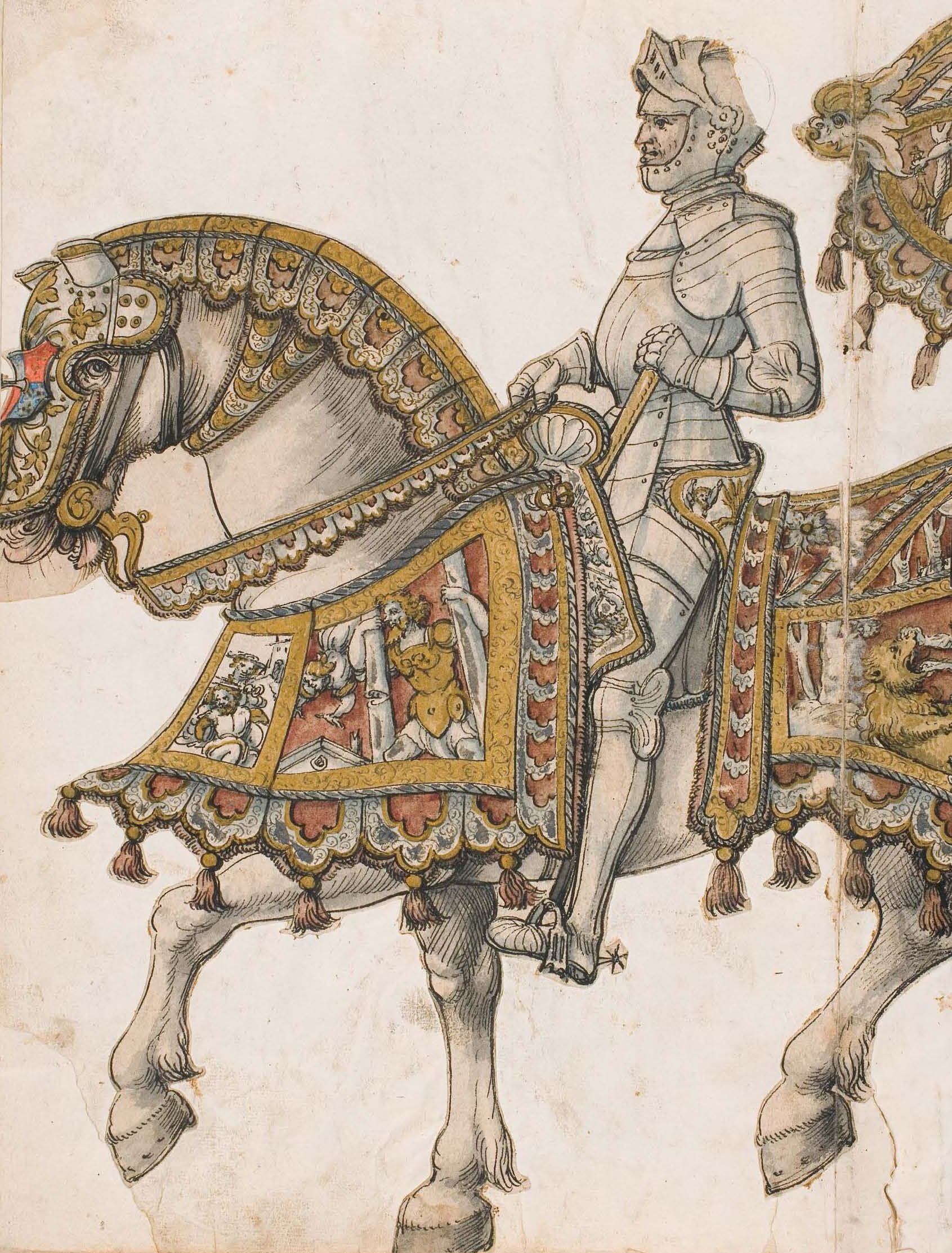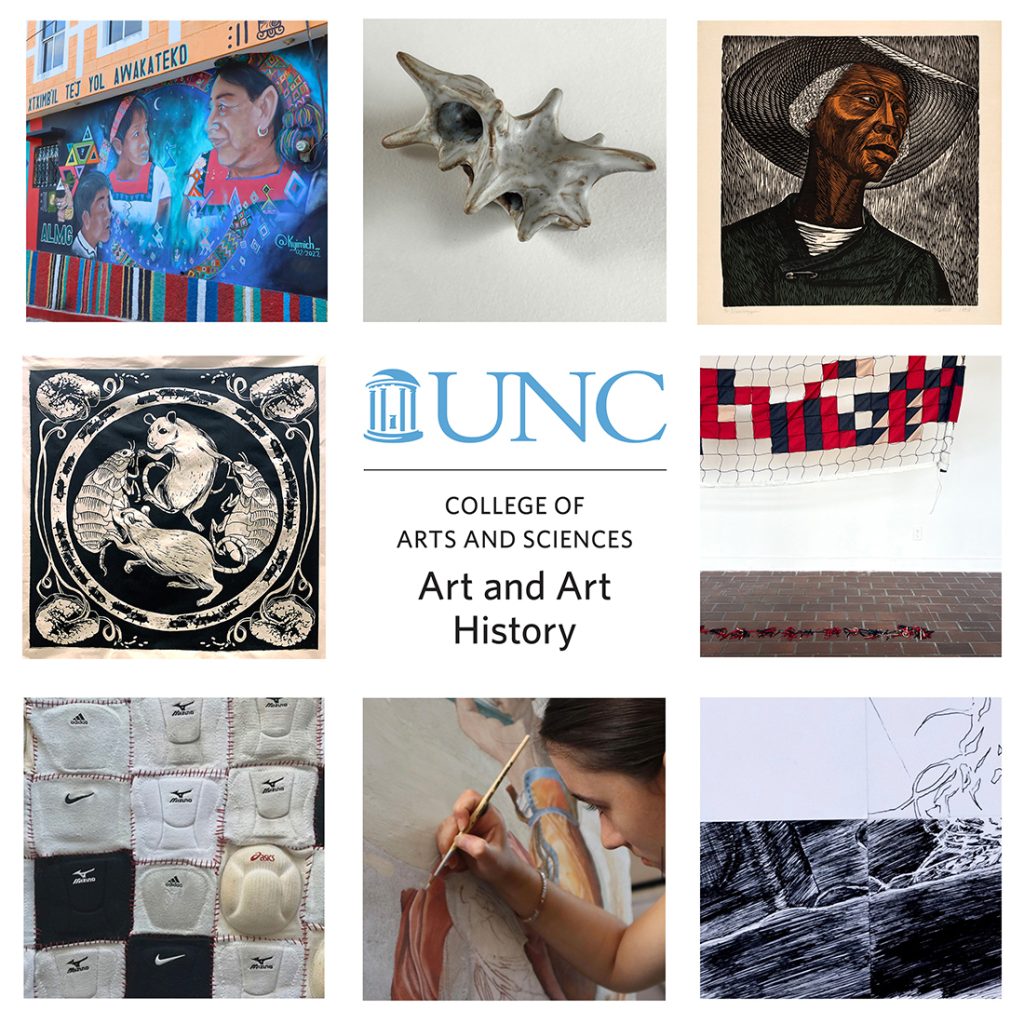
- This event has passed.
Lectures in Art History: Ashley West, Temple University
March 31, 2022 @ 3:00 pm - 4:30 pm

“Local Innovation and Intermedial Thinking in Pre-Modern Augsburg”
On Zoom
Registration Link (available until start of event): https://unc.zoom.us/meeting/register/tJcof-GspjoiHdOW8ysUg4xg7TDC1OwdqzXM
In such an internationally-connected—even globally-connected—cultural and financial center as Augsburg in the early sixteenth century, what is the importance of the sense of place and locality generated by its citizens and artists, and what might we learn by drilling down to the street-level of activity and interaction taking place there? Central to this story is the painter and print designer, Hans Burgkmair, whose name appears in the Augsburg guild records in 1498 as master in the Painter, Glazier, and Sculptors’ Guild. Soon after becoming a master Burgkmair began to keep a steady workshop of apprentices – introducing the first into the guild records in 1499, with three more listed in 1501. In 1508 Wolfgang Resch, one of Augsburg’s most skilled woodblock-cutters, lived in Burgkmair’s house. Tax records also indicate that the sculptor Sebastian Loscher resided with Burgkmair from 1510-14. The esteemed imperial armorers, the Helmschmieds, were particularly close to the Burgkmair household. In this talk I shall explore the living-working shared spaces of some of Augsburg’s key artist workshops, arguing that the close proximity of various named craftsmen working in different materials brought about not only collaborations and creative energy in multi-media works, but foremost artistic and technical innovations by Burgkmair during these years, especially in the sphere of printmaking. What’s at stake ultimately here is the illumination of a localized topographic view of key artistic sites and networks—personal and professional —and an expansive idea of what the technical, manual, and cognitive processes were for a master like Burgkmair.
Ashley West is an art historian of the early modern period, 1400-1700, with a particular expertise in the history, practice and theory of printmaking and with interests in imagery produced around different kinds of cross-cultural encounters between Europe and the Ottoman Empire, the “New World,” Africa and the East Indies. She studies processes of cultural transmission and the dissemination of knowledge in the early modern period, as well as opportunities for artistic exchange through travel and portable objects, pilgrimages, diplomacy, warfare, global trade and exploration and early collecting practices.
West has been a fellow with the international research project on “BildEvidenz. History and Aesthetics” at the Kunsthistorisches Institut at the Freie Universität in Berlin and her work has been supported also by the Center for Advanced Study in the Visual Arts (CASVA) and the Andrew Mellon Foundation, among others. She is currently working on the visual culture and technologies of sixteenth-century Augsburg as a site for negotiating the global and the local in everyday experience; and is co-editing a volume on the Cultural History of Collecting in Early Modern Europe for Bloomsbury Academic Press.
West has published on early etchings; woodcuts of late medieval relic collections; notions of visual history and the German sense of the past; early modern antiquarianism and early representations of peoples from the coast of Africa and India. Her forthcoming book, Hans Burgkmair and the Visual Translation of Knowledge in the German Renaissance, reevaluates notions of the German Renaissance through the prints, drawings and paintings of Hans Burgkmair the Elder, a contemporary of Albrecht Dürer.
Image credit: attrib. Hans Burgkmair, Preliminary design for horse armor (bard) for Kolman Helmschmied, c. 1517

